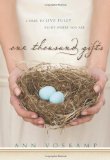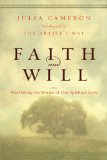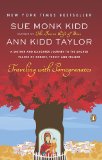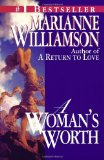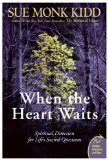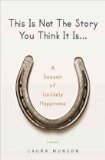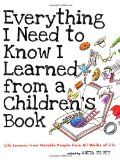Review of Still, by Lauren F. Winner
Notes on a Mid-Faith Crisis
by Lauren F. Winner
HarperOne, 2012. 244 pages.
This is going to be one of those “reviews” that talks more about me than about the actual book. But it’s a book on musings about faith, and aren’t the best books of musings those that set off all kinds of thinking and musing in your own head? Many different things came together for me, and I need to write them out to get a grasp on them. In fact, in that I relate to the author herself. She says in the Author’s Q & A section at the back:
I’m sure a therapist somewhere could tell you why I do this, dissect my spiritual life on the page for readers. I like to think I’m called to do it. My own spiritual life owes so much to reading, to books; I like to imagine my own books help other people, that they are a debt offering, a gratitude offering. Also, frankly, it is a kind of writing I enjoy — it is “deep play” for me, this kind of writing. Still, I don’t think this book is really about me. If I’ve written it well, it isn’t about me. It’s about the questions: How does a spiritual life change? How do you enter that change?
First, I’ll talk a bit about what the book is. It’s a book of musings, and it’s also a book about middles. Mid-faith. Midlife. It’s a book about crises. Death. Divorce. And it’s a book about after crisis. Here’s another paragraph from that ending section:
I wanted to emphasize the subtle but hugely significant shift from depressed, intense crisis to pacific openness, from no sense of God to a new sense of God. From wrenched and wrecked to calm communion with a God I both know and don’t know. In part the structure was hard because what might be considered the real crisis point . . . is the prelude to the book. The spiritual unraveling, the alienation from God that I felt after my mother’s death and in the midst of my marriage — that is the backstory. Still opens at the tail end of that darkness. The book is not primarily a picture of the darkness. It is a picture of the end of the darkness, of the stumbling out of the darkness into something new.
Here’s what she says about it at the start of the book:
I was carried to the middle of my spiritual life by two particular events: my mother died, and I got married, and the marriage was an unhappy one. Had you asked me before — before my mother got sick, before I found myself to be a person thinking about divorce — I would have told you that these were precisely the circumstances in which one would be glad for religious faith. Faith, after all, is supposed to sustain you through hard times — and I’m sure for many people faith does just that. But it wasn’t so for me. In my case, as everything else was dying, my faith seemed to die, too. God had been there. God had been alive to me. And then, it seemed, nothing was alive — not even God.
Intuition and conversation persuade me that most of us arrive at a spiritual middle, probably we arrive at many middles, and there are many ways to get there. The events that brought me to the middle of my spiritual life were dramatic, they were interruptions, they were grief.
But grief and failure and drama are not the only paths to a spiritual middle. Sometimes a whole life of straightforward churchgoing takes you to a middle. Sometimes it is not about a conversion giving way, or the shock of God’s absence. Sometimes a life of wandering takes you to a middle. Sometimes you come to the middle quietly.
You may arrive at the spiritual middle exhausted, in agony, in what saints of the Christian tradition have called desolation.
Or your journey to the middle may be a little easier, a little calmer — it is not that God is absent — it is, rather, that your spiritual life seems to have faded, like fabric. Some days the fading doesn’t trouble you at all; other days, it seems a hollowing loss. You’re not as interested as you once were in attending to God. You no longer find it easy to make time for church, for prayer. . . .
This book is about the time when the things you thought you knew about the spiritual life turn out not to suffice for the life you are actually living. This book wants to know about that time, and then about the new ways you find, the new glory road that might not be a glory road after all but just an ordinary gravel byway, studded with the occasional bluet, the occasional mica chip.
So that should give you an idea what the book is about. If you’re the sort who likes spiritual musings (as I do) and books who make you think, there is much to enjoy here.
Now for the part about me. It began on a totally different topic. Our pastor’s been doing a series of sermons on politics, and last week he covered homosexuality.
Now I have to say that I was cringing at the very thought of these sermons. I’ve heard some very dogmatic sermons where I don’t think dogma is warranted. I don’t think the Bible is terribly clear on most political topics, and I definitely don’t think that one political party in America has the lock on the “Biblical view.” In fact, I really hate it when someone claims there is a “Biblical view” on most of these political topics.
But the pastor did a good job at doing his best to present two sides to each one of these topics. He never told us, “This is the Biblical view,” and presented different views on the Bible’s teaching on all of the topics, even when he had a clear leaning one way or the other. I appreciated that very much.
Part Two: Thinking about the sermon later, it occurred to me that it’s worlds easier to decide something’s sinful when it’s not something you’re tempted to do. For example, lying isn’t my weakness. My weakness is telling too much truth to too many people. So when my ex-husband lied, it was incredibly easy for me to think, “See! He has NO self-control!” But the fact is, I have no self-control when it comes to lying, because I need none. I’m just not really tempted in that direction.
Since homosexuals haven’t exactly been welcomed into the church, it’s so easy for those left to decide that homosexuality is sinful. We don’t have to look at the other sins that we actually are tempted toward.
Part Three: At Bible Study last night, one person asked what people at church thought of the sermon series. I mentioned a little bit about why I was so glad that two sides were presented. We talked about not being judgmental. Jesus told the woman caught in adultery, “Then neither do I condemn you.” But he also told her, “Go now, and leave your life of sin.” So he was not telling her adultery is fine.
I’d just been reading a novel where a gay person has to deal with a hate-filled Christian group. I said that Jesus started with love. But some in the group said that if you love someone, you are going to worry about them staying in sinful conduct.
Part Four: I was reading this book today, and this thought occurred to me: What if it isn’t sinful?
I know, this will seem pretty obvious to many of my readers. But it seems to me that was what the Pharisees were all about: Telling everyone exactly what was sinful and what was not. And Jesus challenged that dramatically, in many different ways.
What’s more — wait for it — I am not Jesus!
In Romans 14:4, it says, “Who are you to judge someone else’s servant? To his own master he stands or falls. And he will stand, for the Lord is able to make him stand.” If I am sinning, I believe that God Himself is going to be working on me, right where I need to be worked on. Can’t I trust him to do that for others?
Then came Part Five. Lauren Winner says this about her divorce: “Among other things, divorcing has shaken up the assumptions I bring to reading scripture. In leaving my marriage, I was doing something that was simply not permissible, not in the way I have always interpreted scripture, and that is something I remain troubled by, confused by — it is not something about which I feel cavalier.”
Now, for someone who is divorced myself, I’m still awfully judgmental about divorce. Because I KNOW what my husband did is wrong! I was hurt by it!
Today, thinking about these issues regarding gay marriage, and thinking that I approve much more of someone who sticks with his gay partner for 30 years than someone who breaks his heterosexual marriage vows after 15 years — well, I realized that I’m awfully judgmental in certain areas myself.
What if I applied that same question to everyone who isn’t me? Even *gasp* my ex-husband?
What if it isn’t sinful?
And what if it isn’t my business even if it is? Shouldn’t I spend my real scrutiny on the activities and attitudes that take up my own time?
As you can see, this author of spiritual musings really got me thinking. She must have been doing something right.
laurenwinner.net
harperone.com
Find this review on Sonderbooks at: www.sonderbooks.com/Nonfiction/still.html
Disclosure: I am an Amazon Affiliate, and will earn a small percentage if you order a book on Amazon after clicking through from my site.
Source: This review is based on a library book from the Fairfax County Public Library.

